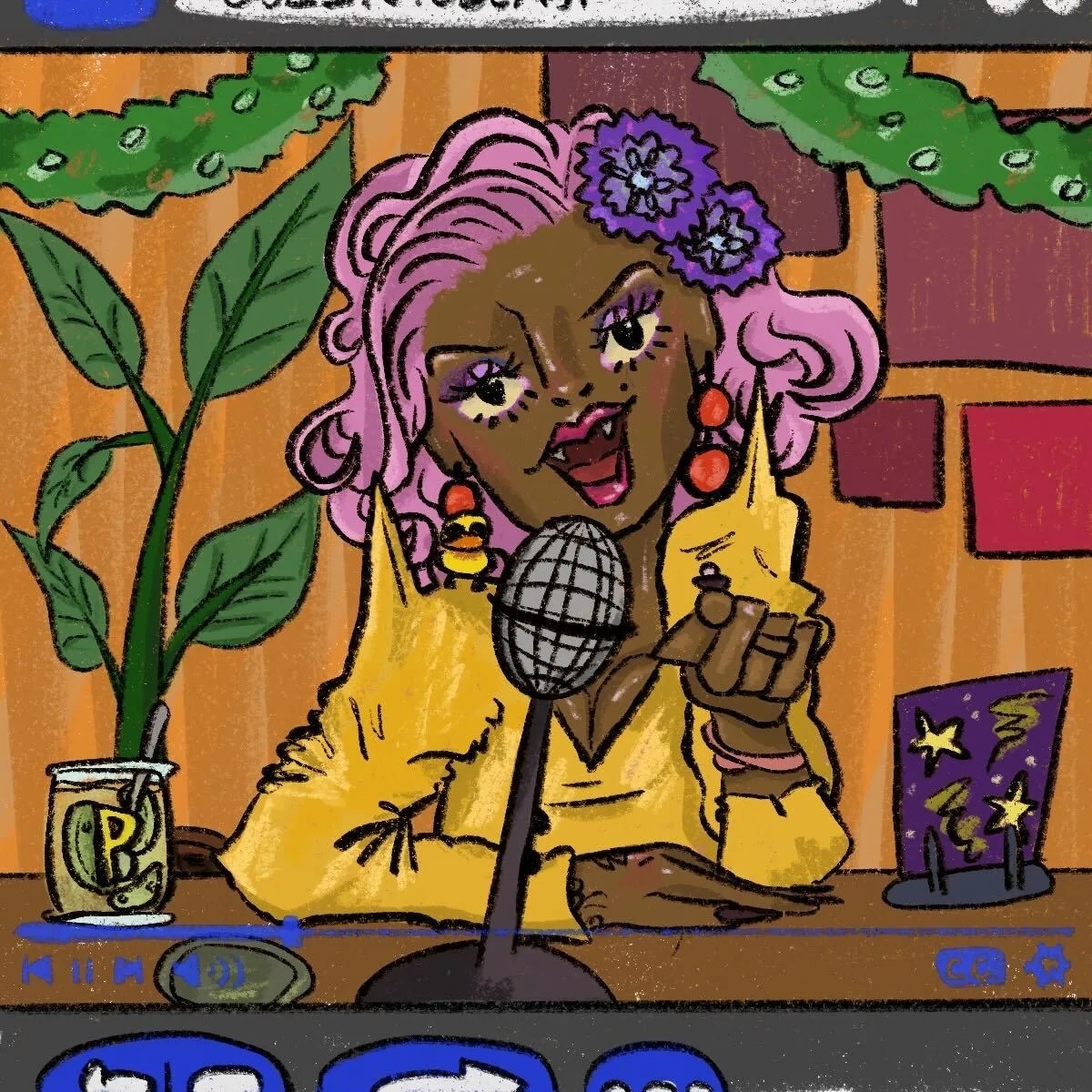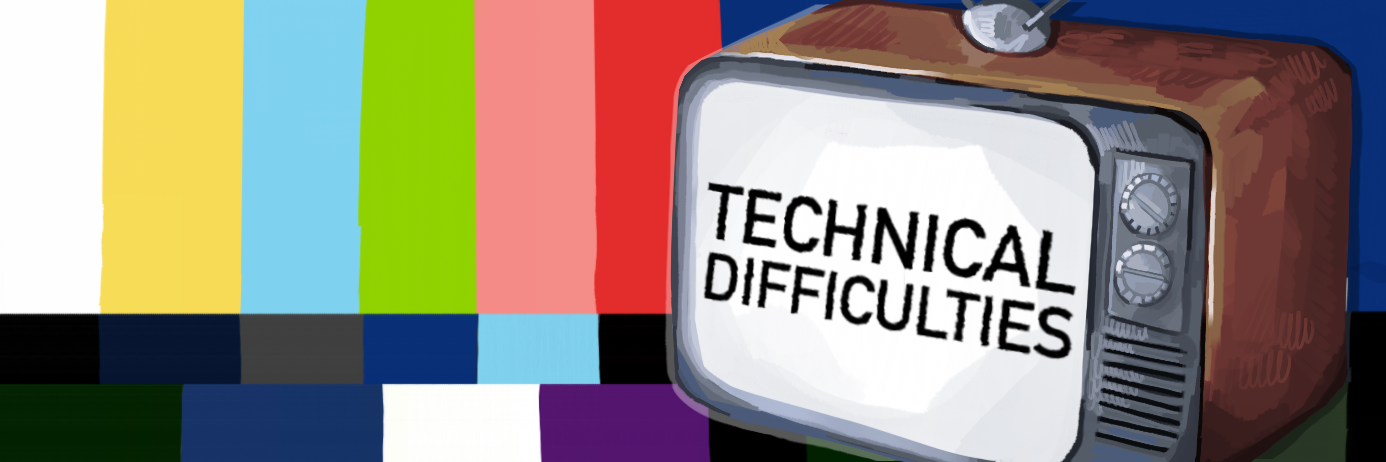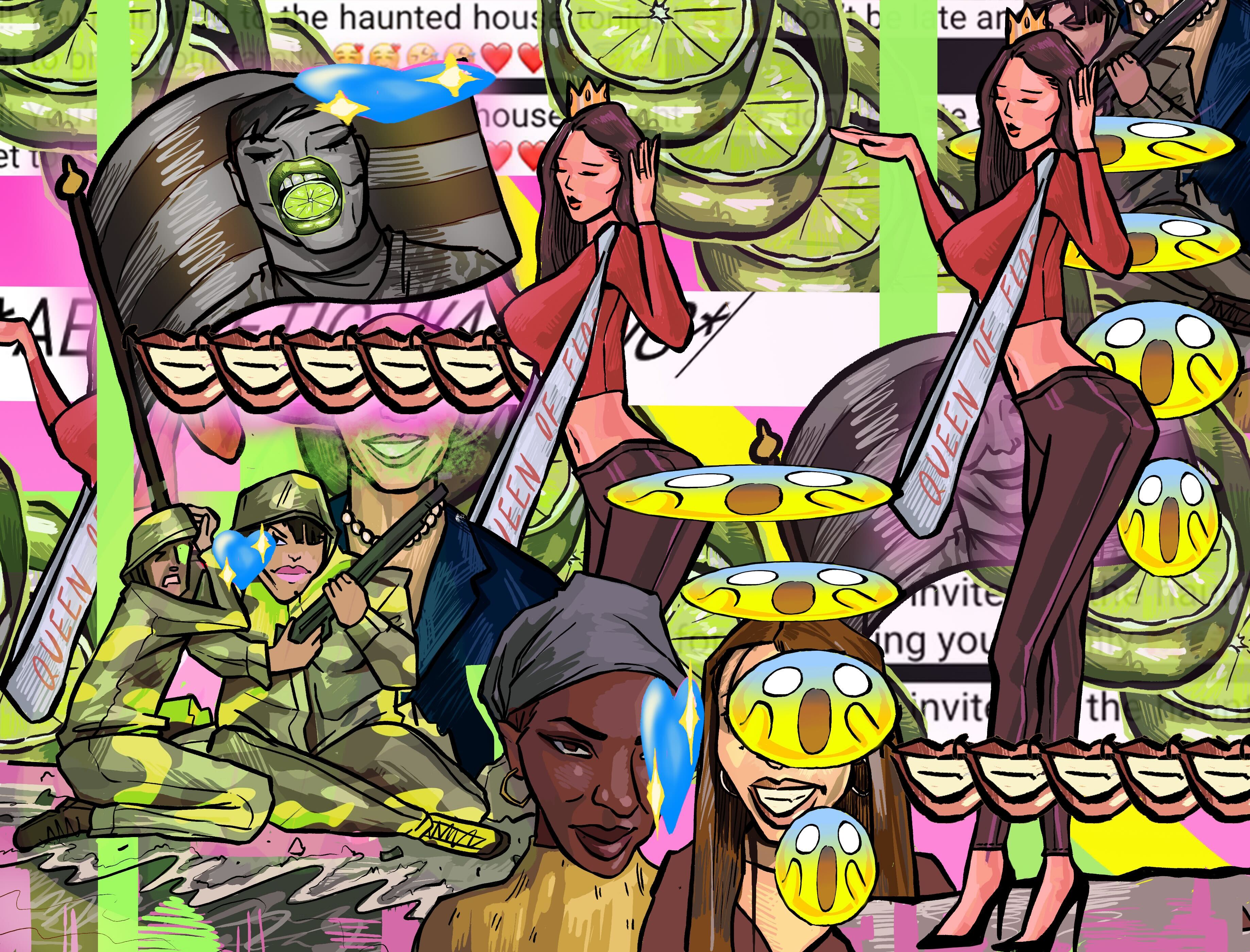Second Take: From reading the girls to ad reads – the rise of drag queen podcasts

(Yuri Mansukhani/Daily Bruin)

By Eric Sican
April 17, 2025 8:14 p.m.
The queens of podcasts are anything but a drag.
Drag queen-hosted podcasts and YouTube series have quietly – and now loudly – taken over the internet. Over the past year, a new wave of queens has carved out space for themselves on digital platforms using talk shows, solo rants and chaotic interviews to create something far beyond entertainment. Shows like “Very Delta” and “UNHhhh” have become internet landmarks where the humor is exuberant, the editing is sharp and nothing is ever taken too seriously.
With iconic queens like Delta Work, Trixie Mattel and Katya Zamolodchikova at the helms, these projects have evolved into full-fledged media ecosystems. Each series develops its own rhythms and inside jokes, creating a world where fans know every catchphrase, edit choice and off-the-cuff tangent. Unlike other podcasts, these aren’t one-off clips hoping to go viral. They’re built from consistency, lore and an unapologetic embrace of the ridiculous.
This corner of the internet functions a lot like other niche digital communities – true crime YouTube, wellness TikTok, Twitch gaming – but what sets drag creators apart is their instinct for self-parody and their refusal to dilute their content for mass appeal. They aren’t performing to be liked. They’re performing because they know exactly who they’re speaking to.
That’s why a show like “Very Delta” stands out. In each episode, Delta Work opens with a sharp, sometimes biting solo segment – dissecting everyday annoyances with the same precision she once brought to runway critiques. From pet peeves about brunch culture to lengthy reflections on table manners, Works’ delivery is half stand-up, half stream-of-consciousness diary. It’s not sanitized. It’s not optimized for the algorithm. And that’s exactly why it works.
On the other side of the spectrum, Mattel and Zamolodchikova’s “UNHhhh” is a lightning-fast collage of camp and chaos. The two riff off each other with almost psychic timing, their episodes layered with ironic edits, sudden zoom-ins and jarring cutaways. No topic is too basic – or too bizarre. They’ll spend time on wigs, trashy TV or “the concept of men.” There’s no thesis, no wrap-up, just pure energy and absurdity, a tactic that has managed to garner the show over 120 million views on YouTube.
Drag podcasts and video series have managed to successfully build community, something many digital creators struggle with. Not in the vague “Join our fandom” way but in the sense of crafting a shared language. Fans know the references. They know the beats. They remix clips, quote one-liners and participate in the show even when the hosts are not on screen.
This kind of engagement is rooted in sincerity. While the broader internet shifts toward polished authenticity, drag queens have mastered a different kind: exaggerated honesty. Their personas may be heightened, but their humor is real – and so are their opinions. That clarity cuts through the noise.
It’s the same kind of clarity that helped Charli xcx’s “BRAT” dominate the conversation in summer 2024. Charli xcx didn’t try to smooth out her sound or make herself more palatable. She made the album she wanted, and in doing so, struck a chord with fans and newcomers alike. Drag creators operate on the same frequency. By leaning fully into their brand of humor, they’ve created spaces where people don’t just laugh – they feel seen.
Zamolodchikova’s newest project, “Who’s the A**hole?” a talk show produced by Grindr, is the latest proof of this trend. Equal parts interview series and avant-garde comedy experiment, the show is packed with surreal visuals, strange segues and questions that you’d never hear on late-night TV. But instead of confusing audience members, the format invites them in. It’s not built for virality – it’s built for curiosity.
Drag content doesn’t follow the rules of influencer culture. There’s no push for relatability, no obsession with monetizing every minute. The goal is simple: Make people laugh, and make it unapologetically personal. In a world where digital spaces often become crowded with wellness coaches, skincare experts and productivity gurus, drag creators offer relief.
And importantly, these aren’t just personalities. Drag queens are performers. They know how to command a room, whether it’s a sold-out venue or a cluttered YouTube set. That theatricality translates perfectly to digital media, where pacing and presence matter more than polish.
This new generation of drag-led content proves that internet fame doesn’t have to come from following trends. Sometimes, it comes from creating your own – one wig reveal, one side-eye, one perfect read at a time.



